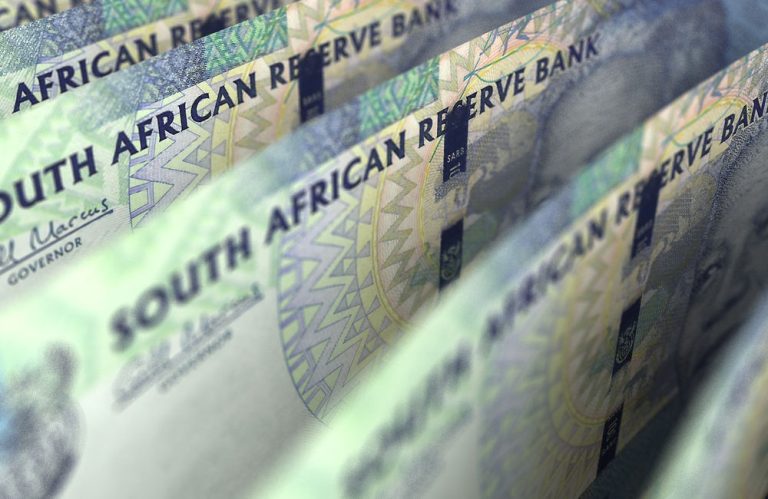The USD/ZAR exchange rate has bounced back in the past few days, helped by the soaring US dollar index (DXY). After bottoming at 17.05 on September 30th, the pair bounced back to a high of 17.80.
US dollar index rally
The South African rand has been one of the best-performing currencies this year as it soared by over 10% from its lowest point in 2023.
Recently, however, the USD/ZAR pair has bounced back because of the ongoing US dollar index rally.
Data shows that the DXY index bottomed at $100.18 on September 27 to almost $107. This rally has coincided with the rising US bond yields as the ten-year Treasuries soared to 4.14% and the five-year jumped to 4.003%.
Other government yields have also continued rising as investors change their view about the next actions by the Federal Reserve.
A few weeks ago, the general view among market participants was that the Federal Reserve would continue cutting interest rates aggressively as the labor market worsened.
Recent economic data have pointed to a change of tune by the Fed. Data released earlier this month showed that the unemployment rate dropped slightly to 4.1% in September, while wage growth accelerated. The economy created over 254k jobs during the month.
More data showed that the US inflation has remained stronger than expected. Data released almost two weeks ago showed that the headline Consumer Price Index (CPI) retreated from 2.5% in August to 2.4% in September, higher than the median estimate of 2.3%.
Core inflation, which excludes the volatile food and energy prices, remained unchanged at 3.2%, which is much higher than the Fed’s target of 2.0%.
Another report released last week showed that the country’s retail sales remained steady in August. Therefore, analysts believe that the Federal Reserve will not be inclined to be as dovish as it was in the last meeting.
The US dollar index has also jumped as the US election nears. Polymarket traders believe that Donald Trump will win, while many mainstream polls show that the final result will be close.
Donald Trump has maintained that he needs the US dollar to weaken in a bid to improve manufacturing activity. However, analysts caution that his policies would strengthen the US dollar.
For example, he has made tariffs a major part of his economic proposals. Another trade war would push more people to seek refuge of the US dollar. In a note, analysts at ING Bank said:
“Unless markets regain some confidence in Fed cuts, the dollar will hardly face downward corrections in the near term. The risk now is that markets might actually price out one cut in either November or December.”
South Africa inflation ahead
The USD/ZAR exchange rate has bounced back because of the US dollar index’s strength. In its last monetary policy meeting, the South Africa Reserve Bank (SARB) decided to cut interest rates by 0.25% for the first time in over four years.
The bank slashed interest rates as inflation continued its downtrend, helped by the rand strength. Data by the country’s statistics agency showed that the headline Consumer Price Index (CPI) dropped to 4.4% in August from the previous 4.6%.
The CPI has been in a strong downtrend after peaking at 7.8% in 2022, and analysts expect the figure to keep falling. Analysts expect the CPI data, which comes out on Wednesday, to show that the headline CPI dropped to 4.2% in September. The SARB expects that inflation will be around 3% in the next three quarters.
The USD/ZAR pair has also retreated in the past few months as investors focus on the political arena where the deal between ANC and Democratic Alliance is holding well.
In the aftermath, various data points have shown that consumer and business confidence were improving. Also, there are rising hopes that the three credit rating agencies will start upgrading their ratings for the economy.
Most notably, the tourism sector in the country is doing well. The country welcomed over 8 million tourists in 2023, and the number has continued growing this year.
USD/ZAR technical analysis
USD/ZAR chart by TradingView
The daily chart shows that the USD to ZAR exchange rate has crawled back in the past few days. However, it remains below the key support level at 18.10, its lowest point in November and December 2023.
The pair has remained below the 50-day and 100-day Exponential Moving Averages (EMA), meaning that bears are control.
Also, the Relative Strength Index (RSI) and the MACD have continued rising in the past few days.
However, it has formed a rising wedge pattern, a popular reversal sign. Therefore, the pair will likely have a bearish breakout as sellers target the next point at 17, its lowest point this month.
The post USD/ZAR rare pattern points to a South African rand comeback appeared first on Invezz









